An easy guide to choosing the right light for your dining room

In the grand scheme of things, lighting your dining area might not seem the most important facet of your renovation, but it's worthwhile to take extra notice.
After all, your eating space should be a comfortable place, and lighting plays a big part in creating a cosy environment.
Here, we put together an easy guide to see what to look out for when sourcing for your dining room light.
From the height to hang your pendants to the brightness levels of your fixtures, here's what you need to know.
SIZING AND SHAPING THINGS UP
When choosing the shape of your lighting fixture, a safe bet is to go with like for like.
Round pendants such as a drum-shaped pendant for round dining tables and linear or larger oval fixtures for rectangle or oblong dining tables.
A cluster of pendants that take the shape of your dining table will work as well e.g. two round pendants lined side by side over a rectangle table.
Proportion is important. Don't get a fixture that is bigger than your dining table or a one that is a lot smaller.
A good rule of thumb is a lighting fixture that is about half to three quarters the width of your dining table.
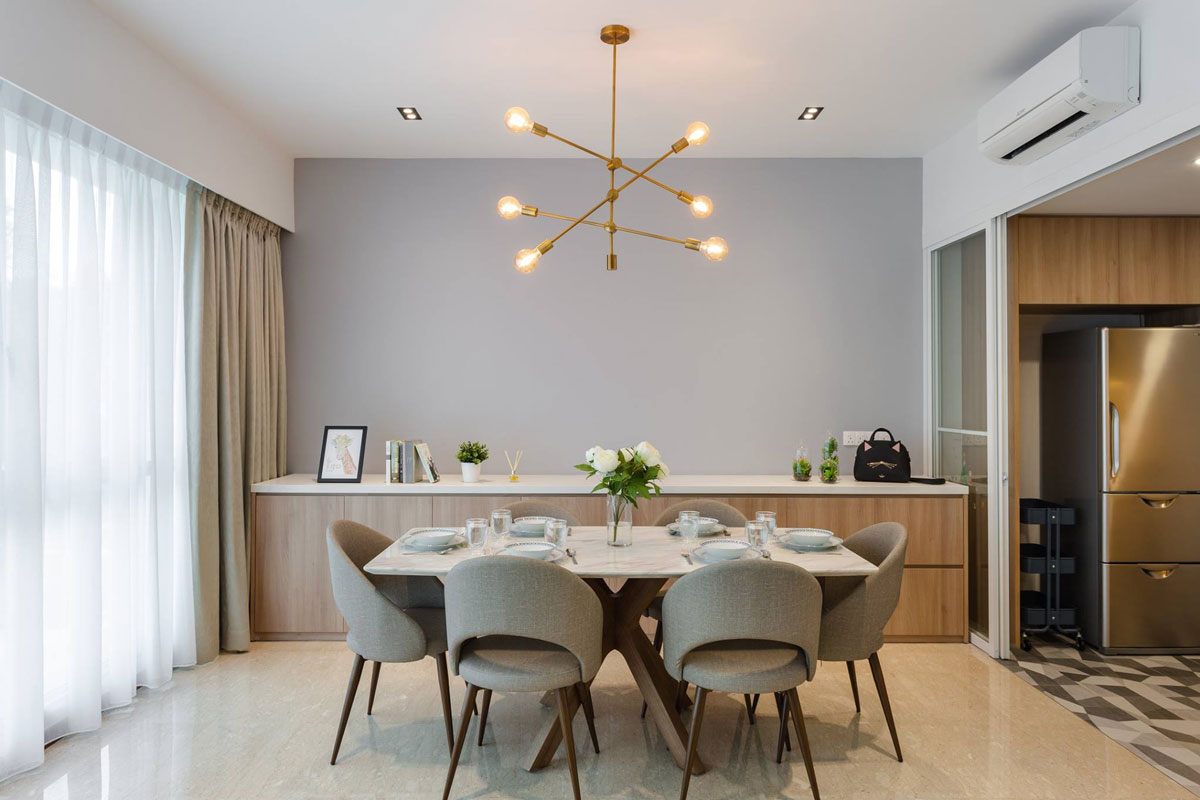
If you have a really long table, two lighting fixtures side by side will help create a more even glow, while also being visually proportionate.
And here's a pro tip for small spaces: For smaller dining tables, a single, central piece of lighting will work better visually than a tiny one.
HANGING HEIGHT
To avoid bumping your head, you will want at least a 30cm clearance between where you are sitting and the edge of your lighting.
As a general guideline, hanging your dining light at least 75cm above the top of the dining table is a good estimate to start with.
However, it really depends on your ceiling height, what sort of light you are going with, and the mood you are trying to convey.
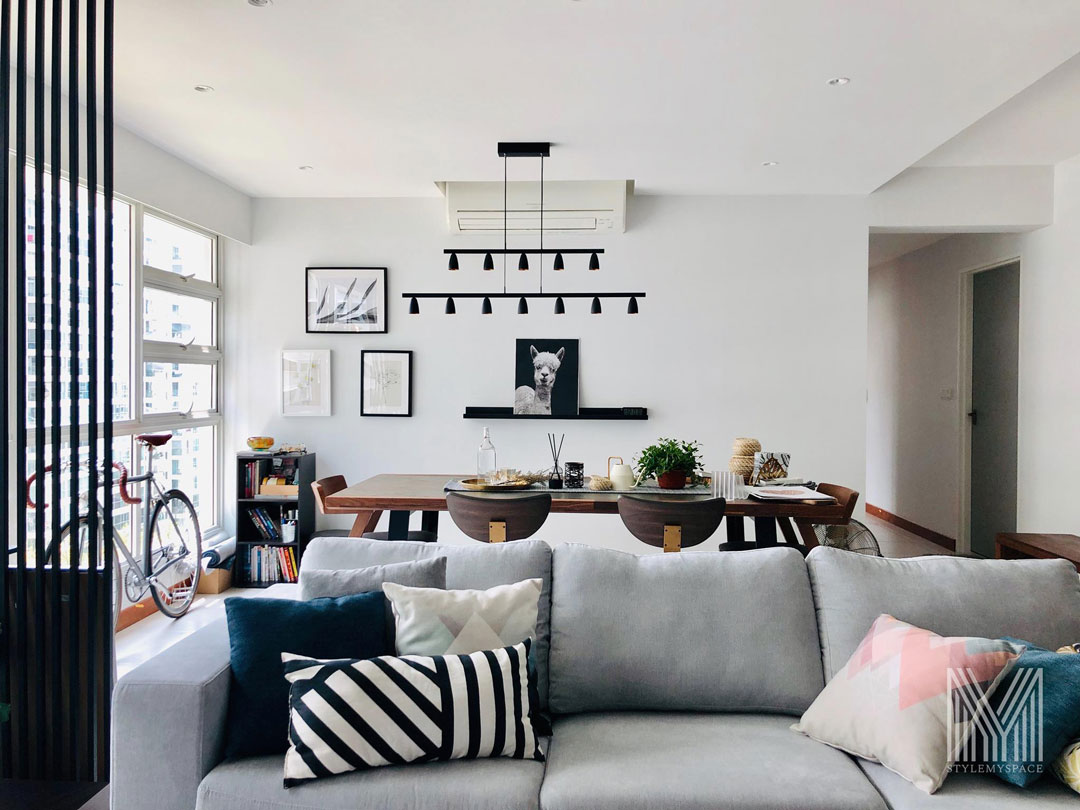
For example, if you are looking to create a more intimate mood, try to hang your lighting lower.
In another instance, a sleek, minimalist pendant can be hung a bit lower compared to an ornate chandelier as the former won't interfere as much with your line of sight while dining.
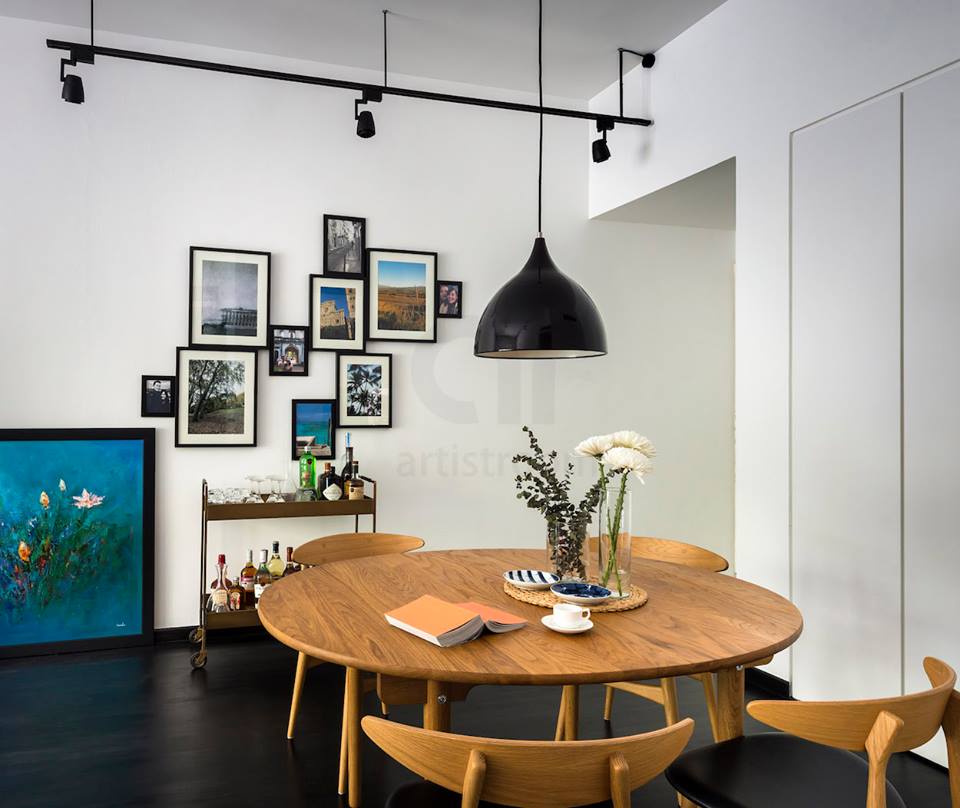
To get a better feel, sit down on your dining chair while your electrician is there installing your fixture.
HOW BRIGHT? WARM OR COOL?
Always get LED bulbs for your dining room light, which are more energy efficient and will last a longer time than traditional incandescent bulbs.
For LEDs, brightness level is determined by lumens.
To illuminate your dining table, calculate the size of your dining table. Approximately 30 lumens per square foot is sufficient.
So a 90 x 180 cm dining table will require a LED bulb with 500 - 600 lumens.
Do note that if you're painting your walls a darker colour, you might need to get more lumens to illuminate your space as darker hues tend to absorb light.
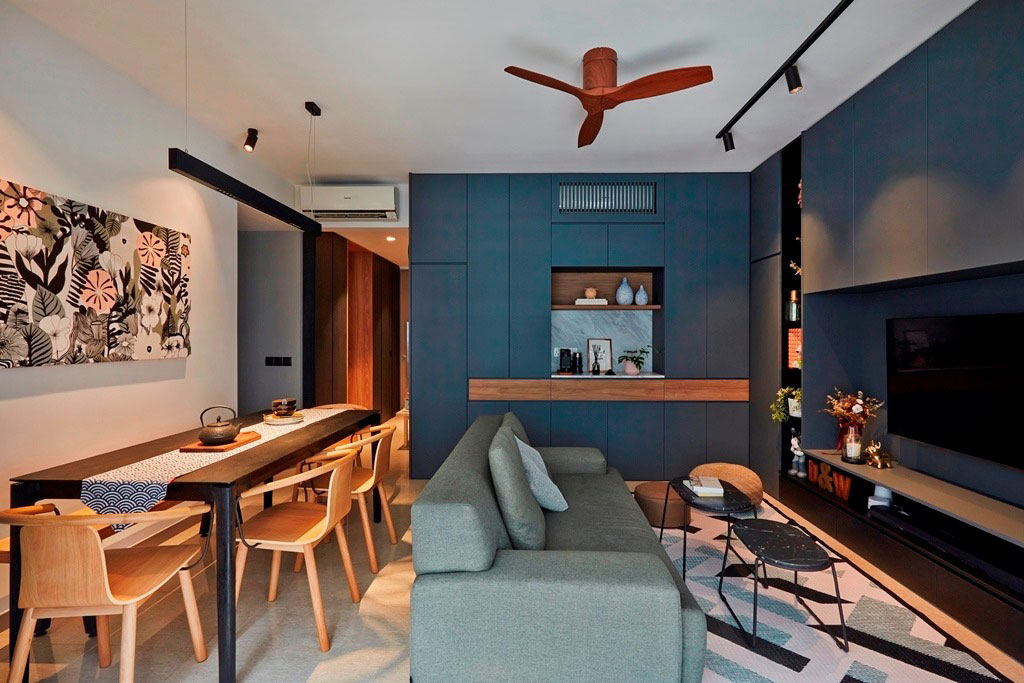
Dining areas should be kept warm and cosy, so opt for LED bulbs with colour temperatures in the range of 2400 - 2700 K that will offer you the traditional incandescent look.
If your dining room is a multifunctional space that is used for more than just having meals, consider getting a dimmer that lets you adjust the brightness level depending on the occasion.
Dimmers can also help to reduce glare since you get the option to dial down the brightness.
Otherwise, get light fixtures that can help diffuse light such as drum-shaped pendants with frosted glass panels on the top and bottom if you are worried about glare.
STYLE TIPS
Pendants work well in open floor plans, since they are able to create a focal point for your dining area and can help demarcate the eating zone from the rest of your communal spaces.
For multipurpose dining spaces, consider layered lighting e.g. coupling a statement fixture with recessed or track lights or even wall sconces that can provide more illumination and versatility in the use of space.
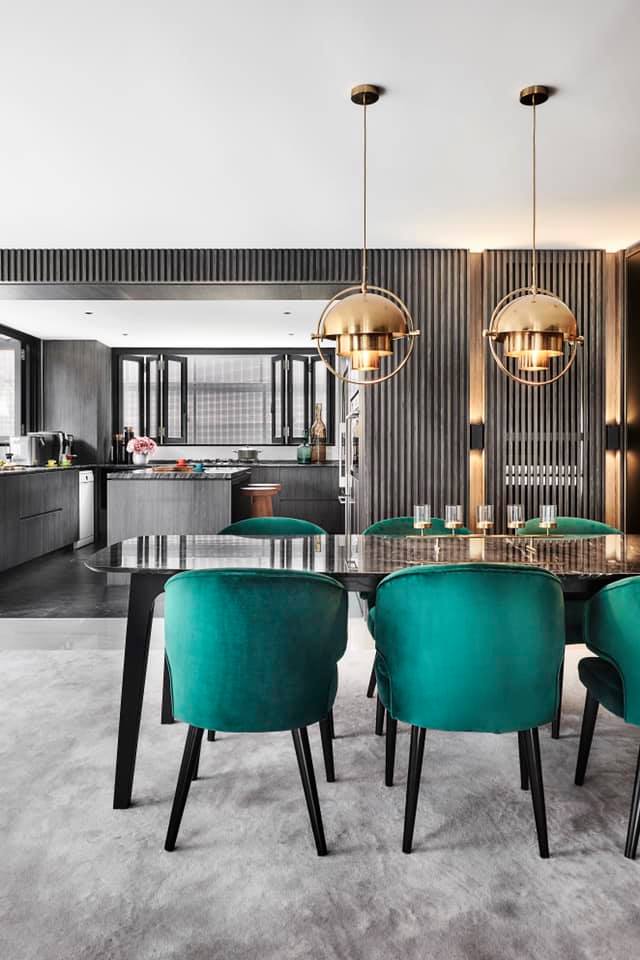
Besides conventional pendants, there are other lighting options to consider for your dining room.
An arc floor lamp that stretches over your dining table will also create a statement piece and will help you save some wiring costs.
Or maybe your dining area is more of a casual, functional zone or you only have a low ceiling height to work with.
Flush or semi-flush mount ceiling lights are a good option in these instances.
As their name suggests, they are flushed to the ceiling rather than hung down low like pendants, so they don't call out for too much attention.
This article was first published in Renonation.